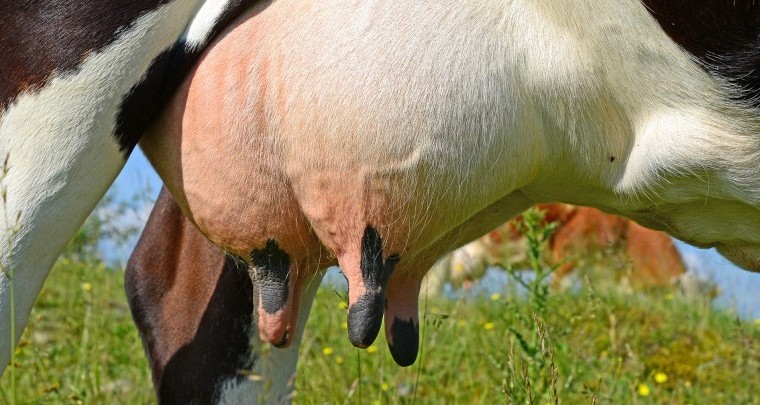But Peter Plate, the vet leading the lab trial, says the results are too small so far to be conclusive. The trial was mentioned by Helen Browning, the Soil Association chief executive, in her talk on sustainability at this year’s South of England Agricultural Society farming conference.
Currently, most farmers treat every case as the bacteria causing mastitis is unknown. Gram positive bacteria (which retain a special stain and have a thicker cell wall) such as staphylococci and streptococci mastitis usually require early and effective antibiotic treatment. But many researchers agree that this is not the case for E. coli and coliform mastitis (gram negative bacteria) as they have a high spontaneous cure rate. In conventional testing, dairy farmers cannot quickly identify the type of bacteria causing each mastitis case. Sending samples away to a laboratory to identify the cause would delay treatment, potentially affecting the cow’s health and productivity.
So the Innovative Farmers project recruited eight organic dairy farms and provided them with Vetorapid test kits which can culture the mastitis bacteria and tell farmers what type they are within 24 hours. Mr Plate, who works for the Endell Veterinary Group in Salisbury, Wiltshire said the test kits were between £5 and £7 each and farmers would need to spend about £200 on an incubator.
Mr Plate has analysed 176 cases of mastitis from the farms in the project and is preparing a report on his findings. He pointed out that in 2011, a United States study had examined 400 cases of mastitis and found no clear cut difference between conventional treatment with antibiotics and treatment with culture test kits. “We already know that the cure rate of clinical mastitis using the test kits is good and the somatic cell counts are comparable with conventional treatments. But this is just a preliminary survey and I am looking for more organic and non organic farmers and cases to give better answers to the questions raised by this work,” said Mr Plate.
About half the 176 cases were treated conventionally with antibiotics and half were cultured for gram negative and gram positive bacteria. Of these, only 20 were left untreated with antibiotics. “I think a reduction of 25% in antibiotic use is realistic but there was a wide variation between the farms. Some had a reduction of more than that and some had hardly anything. It depends on which mastitis is on the farm and other things such as the type of bedding used.” This will influence the distribution of gram negative and gram positive bacteria on the farm: a farm with 90% gram positive bacteria, for example, will require antibiotics after using the culture test kits, said Mr Plate.




